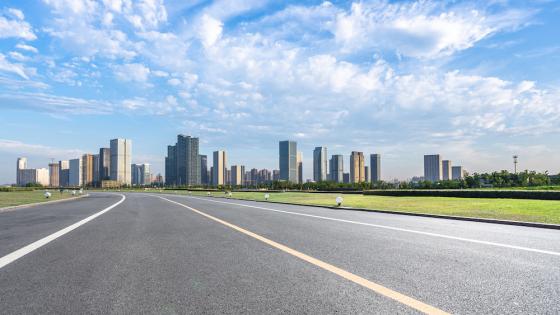A diverse megapolis can be both a productive melting pot where groups live peacefully together or a dysfunctional powder keg where ethnic tensions are fuelled by divisive politics. While thankfully at most times the former applies, sometimes a city is in the latter situation – think of Hindu-Muslim riots in Indian cities, the Catholic-Protestant violence in Belfast before the peace agreement, the 1976 Soweto uprising in Johannesburg, South Africa, or recent instances of urban riots in Paris and other French cities.
There is also a long history of inter-group tensions in US cities – e.g. the 1863 New York City draft riots, the 1919 Chicago race riot, the Philadelphia 1964 race protests, the 1935 and 1964 Harlem riots, and, more recently the 2015 Baltimore protests. In many of these examples, protests were triggered by police brutality and by grievances over a biased judiciary and discrimination against one or more groups.
When inter-group relations turn sour, people over the long term may turn their backs on megacities and move to smaller cities or the countryside. This is what happened in Belfast during the worst spells of violence, leading to a substantial drop in housing prices (Besley and Mueller 2012).
Diversity can also deter urban growth without violent clashes, as in postwar US cities like Cleveland, Detroit, Kansas City, and Oakland, where whites left the central cities after the influx of blacks from the rural South (Boustan 2010). Deterred urbanisation is also seen in India’s two states with the highest degree of ethnolinguistic diversity: Nagaland and Himachal Pradesh. As reported in Eberle et al. (2020), these two states are in the top 3% of diversity and in the top 6% of conflict incidence (1975–2015) across provinces worldwide. At the same time, they are in the bottom 1% in terms of the relative size of their primate city.
In Eberle et al. (2020), we systematically investigate the links between ethnolinguistic diversity, conflict, and urbanisation patterns. For this purpose, we created a novel, fine-grained dataset of geographical population distribution and language use. These data allow us to compute indices of urban concentration in the years 2015 and 1975, as well as ethnolinguistic diversity in 1975 at the provincial level. Provinces are the first-level administrative boundaries within countries, such as US states or German Bundesländer.
We identify the effects of ethnolinguistic diversity on urban concentration from within-country variation in urban concentration at the provincial level, controlling for the 1975 levels of the variables of interest, as well as for country fixed effects. Data covered 3,540 provinces in the 170 countries with more than one province.
We find that social tensions arise more easily in multi-ethnic provinces and that these provinces feature less urbanisation and smaller primate cities. Ethnolinguistic diversity hence discourages people from moving to bigger cities.
The effect is quantitatively important, as moving from a perfectly ethnolinguistically homogeneous province (i.e. with ethnolinguistic fractionalisation of 0) to a perfectly diverse one (i.e. with ethnolinguistic fractionalisation of 1) would be associated with an 11% lower share of the urban population in the province in the long term. This difference in urbanisation corresponds to the difference between the very urbanised Netherlands and the less urbanised US, which has a more rural population.
Similarly, moving to a perfectly diverse province would reduce the degree of urban primacy by 18%. These reduced urban concentration patterns can have important consequences, as policies which inhibit urbanisation and urban concentration can strongly restrict economic growth (Henderson 2003).
Is this nexus between diversity and urbanisation imperative, or is it also shaped by institutions and policies? It turns out that the latter matter. In Eberle et al. (2020), we look for heterogeneous effects, depending on whether a country regime is fully democratic, semi-democratic or autocratic.
In line with the existing literature (Hegre et al. 2001, Esteban et al. 2015), we find that intermediate regimes have the biggest potential to exacerbate inter-group tensions, and that mature, full democracies (and strict autocracies) fare better than fragile democracies. In particular, we find that ethnolinguistic fractionalisation impacts urbanisation patterns substantially less in mature, full democracies than in intermediate political regimes.
This also echoes recent findings of Mueller and Rohner (2018) for Northern Ireland, showing that local-level power-sharing between Catholics and Protestants has contributed massively to the pacification of inter-group relationships, which culminated in the comprehensive Good Friday agreement of 1998 – sharing power nationwide throughout Northern Ireland and creating an inclusive and independent police force and judiciary. Since then Northern Ireland has seen a spectacular drop in violence.
In conclusion, the extent to which ethnolinguistic diversity affects urbanisation patterns depends at least in part on political choices. Building bridges, guaranteeing political representation, and warranting equal opportunities and protection of political and civil rights for all groups of society can help diverse neighbourhoods to live together in a more peaceful, vibrant, dynamic, and productive way.
References
Besley, T, and H Mueller (2012), “Estimating the peace dividend: The impact of violence on house prices in Northern Ireland”, American Economic Review 102(2): 810–33.
Boustan, L P (2010), “Was postwar suburbanization ‘white flight’? Evidence from the Black Migration”, Quarterly Journal of Economics, 125(1): 417–43.
Eberle, U, J V Henderson, D Rohner and K Schmidheiny (2020), “Ethno-linguistic diversity and urban agglomeration”, Proceedings of the National Academy of Sciences of the US of America (2020), in press.
Esteban, J, M Morelli and D Rohner (2015), “Strategic mass killings”, Journal of Political Economy 123(5): 1087–132.
Hegre, H, T Ellingsen, S Gates and N P Gleditsch (2001), “Toward a democratic civil peace? Democracy, political change, and civil war, 1816-1992”, American Political Science Review 95(1): 33–48.
Henderson, V (2003), “The urbanization process and economic growth: The so-what question”, Journal of Economic Growth 8(1): 47–71.
Mueller, H, and D Rohner (2018), “Can power-sharing foster peace? Evidence from Northern Ireland”, Economic Policy 33(95): 447–84.






